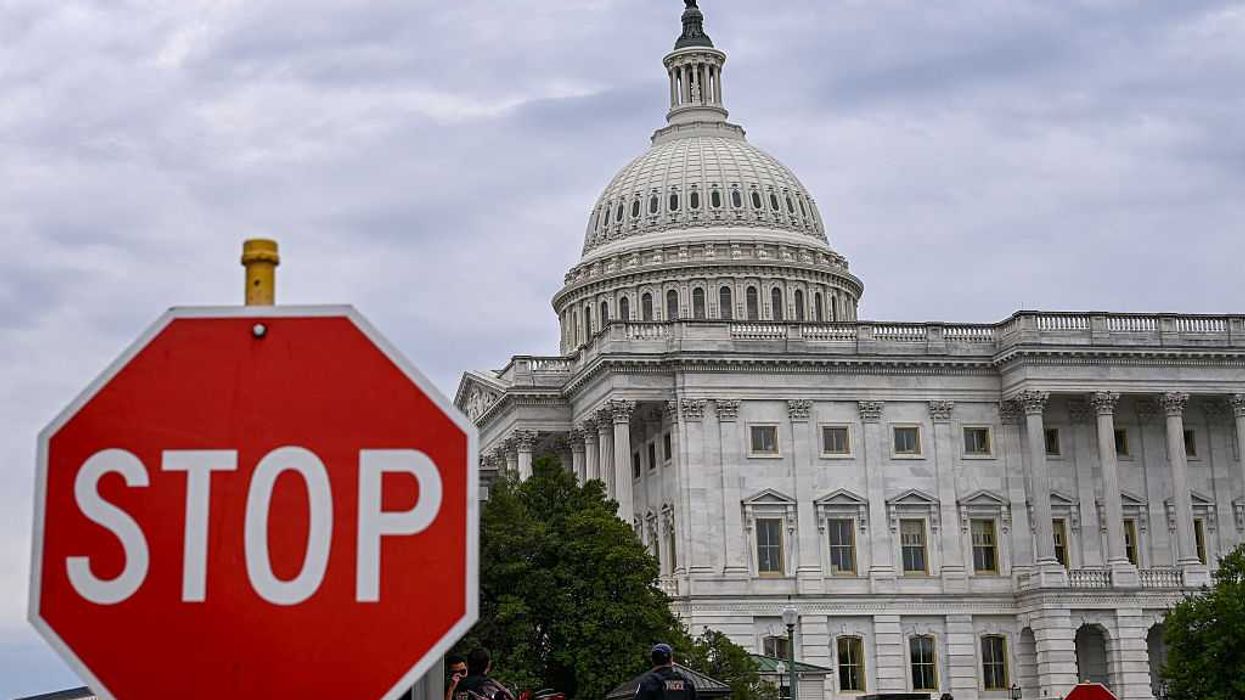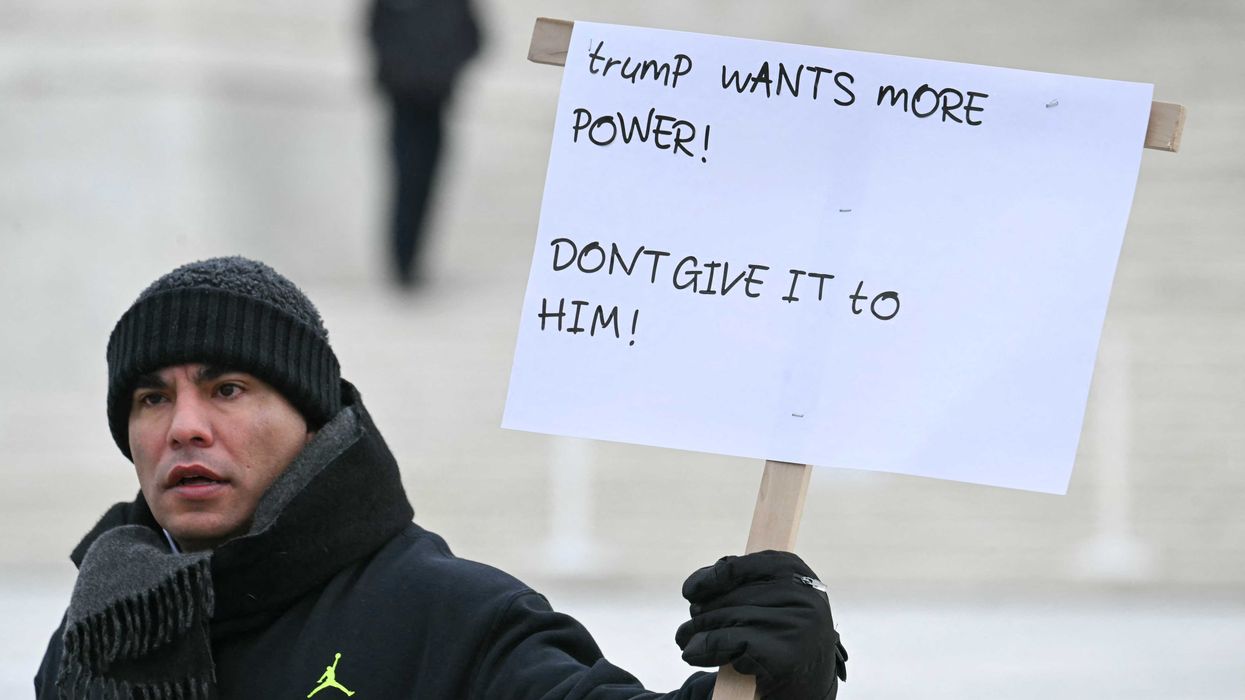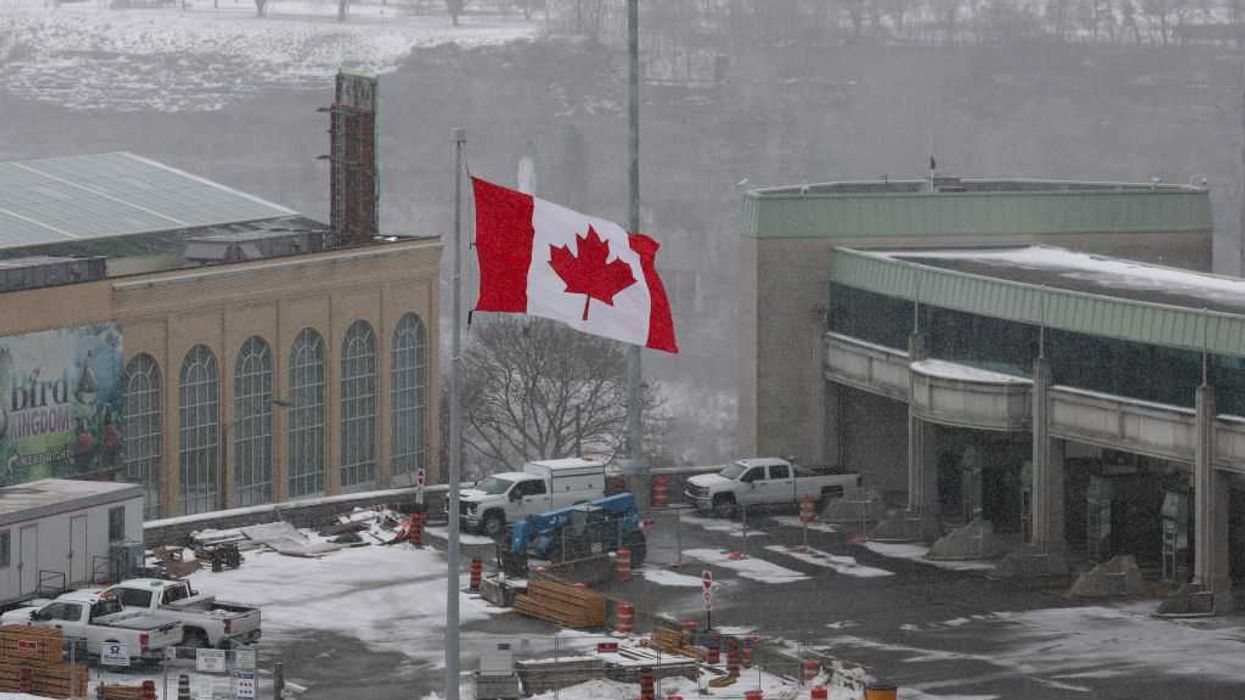Harry Dent, author of the new book The Sale of a Lifetime and editor of Economy and Markets, joined The Glenn Beck Program on Thursday to discuss the economic crisis facing America and what experts are calling an imminent crash of the stock market.
RELATED: Entrepreneur Patrick Byrne on Post-election Economy: We’re Careening Towards a Cliff
Read below or watch the clip for answers to these questions:
• What's the artificial bubble that's about to burst?
• Is Glenn going to sell all of his stocks?
• What does Harry Dent recommend for investors?
Below is a rush transcript of this segment, it might contain errors:
GLENN: Welcome to the program, Harry Dent, author of the new book The Sale of a Lifetime, editor of Economy and Markets at HarryDent.com.
Welcome, harry, how are you?
HARRY: Yeah, nice to be back, Glenn.
GLENN: In the 1980s, you kind of woke up to the stock market cycle. And you began to track this in a different way than everybody else. And you called the bubble of the '90s. You called the bubble of the early 2000s and 2008. And I've been following you for a while. And the one that is coming is gigantic. Would you agree?
HARRY: Yeah, it is. Because, you know, we have two natural bubbles with tech bubble and internet and then with the Baby Boomers peak and spending, which was into 2007, which like you said, we predicted 20 years before that happened, that we we'd have a greater boom than anybody thought. But then it would peak around 2007.
Of course, we've had quantitative easing ever since to try to ease the pain, and that still didn't work. But now we've got a third. And what I hate about it, totally artificial bubble that's all about printing free money. You know, $12 trillion of free money printed around the world.
And since zero interest rates were not low enough, now we've got to go negative in more and more countries. This is insanity to just force people to keep buying back their own stocks with companies or borrowing that little bit more or speculating more. Traders and stuff. And that's all we're growing on. So this is much more dangerous.
And I call this the third and final bubble. And when we peak into the '60s and early '70s, we had three higher highs in the market and three bigger crashes. And, of course, the last one, '73 to '74, was the big one. And that's what I'm seeing here, that 2017 to 2019, approximately, is going to be the time when we see a crash that's bigger and deeper than 2008 and '9. And it actually puts us into more of a depression than just a great recession.
When you grow debt, two and a halftimes GDP for 40 years, you're going to have a debt bubble. And that's going to cause financial asset bubbles and stocks and real estate commodities and everything else. And those bubbles are going to have to unwind. They have to, or you can't go forward in life. The economy can't move forward.
So we've been putting this off now for seven, eight years, which means, it's like a drug addict taking more and more to keep from coming down from the high. When you finally get hit and go to detox, it's not going to be pretty.
GLENN: But you know, a lot of people have taken this hit. Greece is probably the biggest. They've taken their hit.
Germany, they're still out of control. But they're still thinking that they're going to now bail-in. China spends more and more money. I mean, in your book, you talk about these ghost cities that are -- I mean, I was struck by this.
The Changsha City Sky Dream. You write: It was meant to become the world's tallest building at 2,749 feet, 202 stories, built in the shortest time. Imagine building a 202 story building. The Chinese wanted to build it in 90 days.
HARRY: Yeah.
GLENN: We built --
HARRY: It was the first prefab skyscraper. Oh, my gosh.
(chuckling)
GLENN: It's now a fishing hole. The whole thing was stopped and collapsed, and now they just -- the big hole in the ground where the foundation was. They've just filled it with water, and the locals are using it to raise fish.
But, anyway, there's another country completely out of control.
HARRY: You know, it's worse than that, Glenn. I mean, now the latest thing, Shenzhen, which is the most bubbly, large city there, they're now selling apartments, 66 square feet, the size of a decent closet, for $132,000, seven to ten times the income of the people in that city to get a closet to live in. I mean, if that's not a bubble, I don't know what is.
GLENN: So, Harry, the whole thing looks like it's coming down. Is there going to be any system that survives?
HARRY: Well, what happens at a time like this, this is when you can't listen to your stockbroker or even a good financial adviser. Because every -- you're going to have a big reset. We've had bubbles and everything, from this endless low and zero interest rates and endless stimulated economy and printing of money. And this is always going to happen, when this happens throughout history.
So everything has to reset. We even have a bond bubble. Normally, treasury bonds would be a safe place to go longer term. But they're going to have to at least correct it first from their own bubble, from central banks pushing down their yields to zero and negative, before they can grow again. And stocks have to come down. And real estate -- commodities have already crashed. I've been telling people for years, "When bubbles burst, it's not 20, 30, 40 percent. It is 70, 80, 90." And commodities have already collapsed, 70 to 80 percent, proving that when bubbles burst, they crash. They don't just go down slowly, and they don't just correct. And that's going to have to happen to everything else. So there's nowhere to hide. So the thing you do is you just get out.
I'm with HSBC. We said, hey, we're looking like we're going to break a key trend line up, which we did this morning. And the markets could be starting to crash again. And I never know exactly when it's going to happen. And the market never makes it easy. But it is going to be nasty. And one of the other things we've warned people, almost every bubble has had this happen, especially in stocks.
The first crash, even though the bubble is going to end up going down 80 percent on average, the first crash is going to be 40 to 45 percent in two to three months. And that happened in China last year. That happened in 1929. That happened in the tech bubble. It happened in the Nikkei bubble in Japan. And that's what we do in this book. We look at all major bubbles in history and say, "Look, these are not black swans when they crash. They build predictably over a period of time. They grow exponentially. But when they crash, they crash at least twice as fast. And half of that happens in the first two to three months." So you're an idiot if you don't get out a little early. If you want to wait until it's proven, you're going to be down 40 percent before you can react. That's not good investment strategy.
GLENN: So, Harry, I'm the average person, I don't have -- you know, I have a 401(k) or if I have a stockbroker. I barely even know his name.
HARRY: Right.
GLENN: And I go to the stockbroker, and they're going to say, "Look, keep it in. You know, this is long-term. You're going to lose money now, but you're not planning on pulling it out for another 20 years anyway. You leave it in."
HARRY: Yep. And that is why you cannot listen to these people now. Eighty percent of the time or more of that is right. But I tell people all the time, "When you see a major long-term generational spending wave peak, like in '29 or '68, and especially when you see a bubble like 1929 -- 1929 crash was 89 percent in stocks in less than three years, and it took 24 years to get back to even. If you had been a retiring person with a 401(k) plan back then, you would have been dead before you got back to even.
So that is not -- stocks don't always come back, not when you see a major bubble burst and/or when you see a long-term trend. Even in '68, that was not as much of a bubble boom.
But when the Bob Hope generation stopped spending, and when inflation and OPEC set in, it took 54 years to get back to even on that. Manhattan real estate, it crashed the most in the '30s. The greatest city in the world, supposedly, which people think can't go down.
Took into the mid-50s even longer than stocks to get back to even. So you have to get out of the way. And what we do in the book is we say, "Look, there's going to be different sectors over the, next, two, three, four, five years that are going to crash and bottom."
And, you know, we show models for bubbles to show, okay. You can know about how much downside there is. In real estate, it's more like 50 to 60 percent. In stocks, it's more like 70 to 80. In commodities, 80 to 90.
When you see that bubble get erased, then you can get back in long-term and listen to your financial adviser again.
But right now, they will tell you the wrong thing. I can guarantee you. They will just say, "It's all right. You're diversified."
Diversification didn't help in 2008 and '9. And it will help less now. And this is the final bubble crash. There's no way the fed can pull this stunt again if we go into a worst downturn. They're going to lose all credibility.
So you got to just get out of the way. And I'm just saying, look, we have four major indicators, which you mentioned a lot of them earlier, that all point down the same time into late 2000 (inaudible) -- we just got about a three-year period here of extreme danger, after that, you can feel better about stepping back in.
But, hey, what's it to miss three years of stock games when the stock market has, by the way, gone nowhere in the last couple of years, and commodities have only gone down?
So it's bubbled up so much that we think there's less than this. And Baron Rothschild always said, "The secret to my wealth was I always sold a little early."
GLENN: Harry, the -- you say that have cash on hand.
HARRY: Yes.
GLENN: I read a story yesterday that, you know, cash is crashing everywhere. And it's crashing because the central banks can't control it anymore. Our own central bank -- the Federal Reserve, has a white paper out, an internal white paper that was released that shows if this next recession hits, to make any impact, they believe they have to print $4 trillion in bailout stimulus money. And they said, "We're not even sure that would work." I mean, what happens to cash? Are you concerned about cash?
HARRY: I tell you, one of the things I show in the book is how all -- the total financial assets, loans, you know, mortgages, stocks, bonds, everything -- it's about $300 trillion, far beyond stretched any time in history. Can't even compare it.
That's $300 trillion. And in a time like the 1930s when these bubbles de-leverage. I'm talking about a minimum $120 trillion in financial assets, disappearing and not coming back for a long time.
So I would say, if the central banks want to offset the next downturn, they're going to have to print 100 trillion or more worldwide. I don't think they can get away with that.
So 4 trillion would not be enough. They don't know what they're talking about.
GLENN: I know.
EVAN: But they're just trying to slide by and keep the bubble going until they retire from office, like Bernanke or, you know, Obama now and any other president. Everybody just wants to push this thing down the road until the next administration or fed chairman comes in. Because somebody is going to have to take the consequences. You don't get something for nothing. If there's nothing I've learned in life, that's the number one lesson: You don't get something for nothing. And we've had the biggest for nothing economy for decades, but particularly since the financial crisis in 2008 and '9, when we've been living on printed money. You can't solve a debt crisis by creating more debt and printing more money. Because that's how you got there in the first place, printing money through debt. This is crazy.
GLENN: Harry, do you believe that you can trust the banks to keep your money in?
HARRY: No. Because they lend money out. And they've got -- I mean, Deutsche Bank is down 92 percent since its peak in 2007, and continuing to go down because they've got $55 trillion in derivative exposures. You know, four times or whatever -- six times the GDP of Germany or whatever. And bad loans in Italy and bad loans in Germany, bad loans with frackers in the United States.
You know, Italian and German banks and more and more banks have bad loans. And when those loans go bad, they only have 10 percent capital, which Deutsche Bank only has 3 percent because they've been battered. And you start losing money on loans. And all of a sudden, oops, you don't have the money to give depositors back because they lend against your deposits. And they're your deposits, not yours. They don't just raise capital and lend out money.
That's what a normal financial institution should do. They pledge ten percent of our deposits. And then like in the Depression, when those loans go bad, they're like, "Well, you know, we said we had your deposits, but we actually don't. We lost it. We lent it out, 10:1 to your reserves, in deposits, and we never -- and we didn't get it back." So you can't. You have to have your money in a brokerage account. I prefer to be with an independent firm that only does transactions. There's not invest in investment banking or speculate in the markets or lend money from mortgages online or anything. And you just have your money in your own name. They cannot lend against an account in your own name. They can lend against your checking or savings account.
GLENN: Okay. Harry, I've got literally ten seconds. I need a yes or a no on this. Do you think this bubble is going to happen fast enough to affect the election?
HARRY: Possibly, because we just made a big break today. So we could be down 10 percent in a matter of weeks. And, yes, a down market helps the outsider like Trump, and it hurts the insider like Clinton. We've said that for a long time.
GLENN: It could.
Okay. My grandfather -- my grandfather lived through the Depression, and he always said the people who made money during the Depression were the people that had money during the Depression that got their money out.
HARRY: Exactly.
GLENN: That's the premise of Harry's book, The Sale of a Lifetime. Everywhere now. The Sale of a Lifetime. Harry, always good to have you on. Thank you so much for the warning today.
HARRY: Okay. Thanks, Glenn.
GLENN: You bet.
Featured Image: Screenshot of Harry Dent from The Glenn Beck Program


 ALEX WROBLEWSKI / Contributor | Getty Images
ALEX WROBLEWSKI / Contributor | Getty Images
 JIM WATSON / Contributor | Getty Images
JIM WATSON / Contributor | Getty Images Joe Raedle / Staff | Getty Images
Joe Raedle / Staff | Getty Images AASHISH KIPHAYET / Contributor | Getty Images
AASHISH KIPHAYET / Contributor | Getty Images